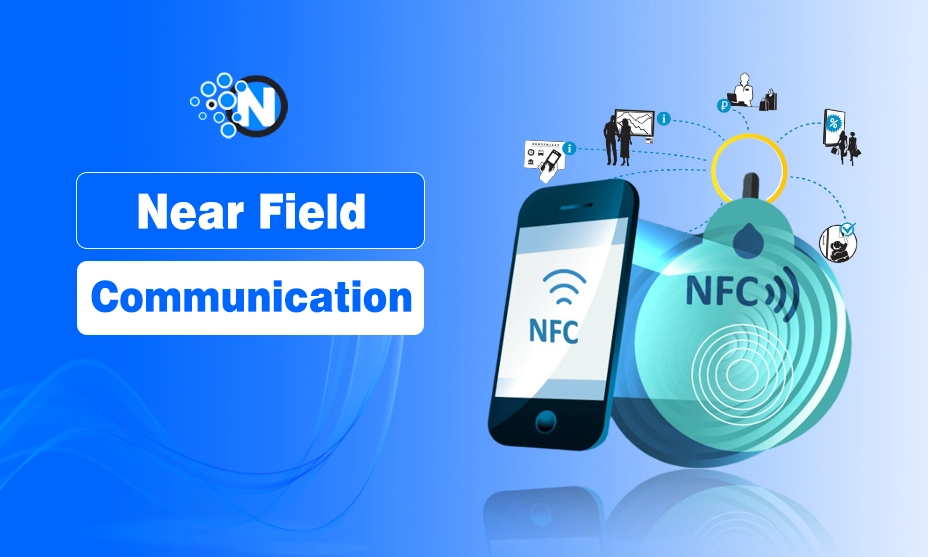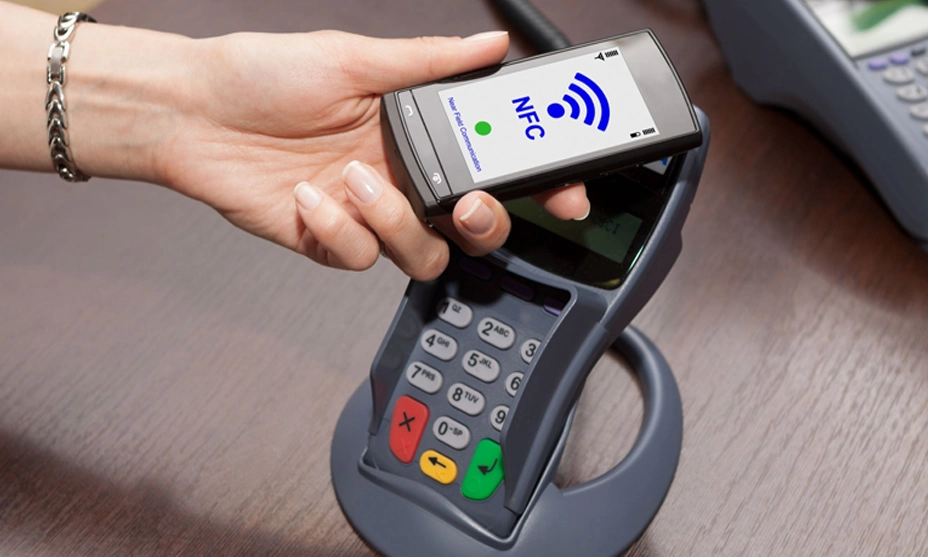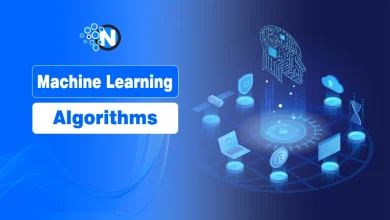What is Near Field Communication – Features, Applications & How It Works

It’s wild how something as simple as a “tap” can now unlock doors, pay for your lunch, or launch your playlist. No passwords. No wires. Just pure convenience. That’s the quiet magic of Near Field Communication (NFC) a technology you’ve probably used today without even thinking about it.
I paid for groceries by just holding my phone near the terminal. It felt futuristic, like a sci-fi moment made real. Fast forward to 2025, and NFC has woven itself into everything from smart homes and wearables to hospitals and transportation systems.
In this guide, I’ll walk you through everything you need to know about nfc near field communication how it works, key features and why it matters in 2025, and where it’s headed.
Let’s tap into the future.
What is Near Field Communication?
Near Field Communication (NFC) is a short-range wireless communication technology for data exchange between two devices placed within about 4 cm (1.5 inches) of each other.
It is a subset of RFID (Radio-Frequency Identification) and operates at 13.56 MHz, offering a fast, secure, and simple way to communicate wirelessly. NFC allows for:
- Device automation
- Two-way communication (unlike RFID)
- Contactless payments
- Data transfers
How Does Near Field CCommunication Work?
NFC involves electromagnetic induction to transfer data. It supports three operation modes:
- Peer-to-Peer Mode: Two NFC-enabled devices communicate directly (e.g., file sharing between smartphones).
- Reader/Writer Mode: An NFC device reads or writes to an NFC tag (used in advertising posters, smart shelves, or museum exhibits).
- Card Emulation Mode: The device acts like a contactless card (used in digital wallets and access cards).
Near Field Communication Examples (NFC)
- Tapping your phone at a POS terminal to pay using Apple Pay or Google Pay.
- Using an NFC-enabled hotel key card to unlock your room door.
- Scanning an NFC tag on a product label to get instant details, reviews, or discounts.
- Sharing contact info by tapping two smartphones together.
- Using an NFC wristband at a music festival to gain entry and make purchases.
- Pairing Bluetooth headphones with a single tap using NFC.
- Accessing a building using an NFC security badge or smartphone credential.
- Setting up Wi-Fi by tapping an NFC tag that auto-connects your phone to the network.
Key Features of NFC
I have provided some essential points to highlight the main features of Near Field Communication. Have a look at them to understand their benefits as well.

1. Short-Range Communication
One of the most exclusive features of NFC is its short-range communication ability. You can bring your two smartphones close. In this way, you can strengthen the signals they produce.
This closeness ensures that you transfer the required data with maximum security and minimal outside interference. Hence, the prevention of these unauthorized accesses optimizes intentional connections between devices.
2. Contactless
Near Field Communications is wireless. That’s why you don’t require a physical connection between the devices to transfer the data and files.You only have to bring them close on the same surface and tap on the specific applications.
As a result, it is quite easy to initiate communication between them. Furthermore, the elimination of wires makes the whole process more convenient and user-friendly.
3. Compatibility
NFC is now supported by almost all modern smartphones, tablets, and smart devices. It integrates easily with other wireless technologies like Bluetooth and Wi-Fi for enhanced functionality.
The widespread adoption across platforms makes it incredibly versatile. Whether you use Android, iOS, or a smart card – NFC likely has a role.
4. Security
Security is built-in with encryption, tokenization, and biometric support. It’s widely adopted in digital payments and ID verification.
NFC transactions are safer than magnetic stripe cards because of encrypted, one-time use codes.
5. Speed
As Near Field Communication is designed especially for shorter-range transfers, it is extremely fast and swift to transfer files. Within a fraction of seconds, you can establish a connection and exchange information between the devices.
Thus, it eliminates the need for traditional data-transferring techniques with wires or through Bluetooth. Also, this feature is quite beneficial when it comes to ticket validation or mobile payments.
6. Low Power Consumption
Power-consuming apps and technologies always take a great toll on the device’s battery life and make it unfunctional very soon. However, you need not worry when using NFC technology to share files across different devices.
The reason is it is an extremely lightweight system and uses lesser components than other apps. Thus, it contributes to the extended battery life of your smartphone.
7. Offline Functionality
One of the standout features of NFC is that it doesn’t require an internet connection to function. This means you can complete transactions, share data, or trigger actions even in offline environments.
It offers uninterrupted performance in remote or low-connectivity areas. This reliability adds another layer of convenience to its use.
What is Near Field Communication Used For?
Following are the main applications of NFC, where it has proved its authority and made its mark worldwide.
1. Mobile Payments and Wallets
The most popular application of NFC is its mobile payment system. You can link your credit or debit card with your smartphone and make payments effortlessly by tapping on a single button at compatible payment terminals.
For example, Google Pay, Apple Pay, and Samsung Pay utilize NFC technology for these transactions.
2. Access Control & Digital Keys
NFC-enabled hotel room access, office entry systems, and vehicle unlocking are increasingly replacing traditional keys.
Apple’s Home Key and Android’s Digital Car Key use NFC for secure entry.
3. Healthcare
The healthcare industry serves as the backbone of every country’s economy and development. Deploying Near Field Technology in it can bring magnificent outcomes.
Through its help, you can manage different activities, like medication administration and patient identification. Thus, it minimizes manly errors to a great extent.
4. Transit Systems & Ticketing
Public transport systems now use NFC-enabled cards or smartphones for contactless travel. Just tap to board buses, trains, or subways no paper tickets or long queues.
This not only speeds up commuting but also simplifies fare collection and improves passenger flow.
5. Retail Engagement & Smart Shopping
NFC is used by stores in product tags and display kiosks to give customers up-to-date information, reviews, and discounts.
You can rapidly load a webpage, offer code, or loyalty card by tapping an NFC tag. It makes purchasing better and connects actual stores with digital platforms.
6. Smart Homes & Automation
You can use NFC tags to automate things in your smart home, such setting alarms, changing the lights, or playing music.
To start a pre-set action, just tap your phone on a tag. You don’t need complicated apps or voice commands to make your home more personal.
7. Gaming & Smart Toys
NFC is embedded in gaming accessories like Nintendo Amiibo figures to unlock special content or save game data.
It adds interactive and personalized elements to toys and games. This blend of physical and digital play enhances engagement and creativity.
8. Logistics & Asset Tracking
Businesses use NFC to keep track of their stock, make sure products are real, and keep an eye on shipments.
You can scan smart tags on packages to get fast updates on their status. It makes managing the supply chain easier and lowers the risk of loss or theft.
What’s New & What’s Next for NFC (2025 & Beyond)?
- Ultra-Secure Payments: Biometric-enhanced NFC is becoming more popular. It combines face ID and fingerprints with tokenized transactions.
- Integration with AR & VR: Augmented reality smart glasses and headsets are being tried with NFC to make virtual surroundings appear right away.
- Eco-friendly Smart Tags: NFC tags can now be found on recyclable materials, which helps with green marketing and keeping track of the environment.
- Embedded NFC in Wearables & Implants: This technology is becoming more personal and smaller, from rings and bracelets with NFC to medical implants.
- Smart Cities: Through unified tap-based systems, near field communication (NFC) is powering urban mobility, public kiosks, library systems, and smart parking.
Final Verdicts
Near Field Communication has transformed the way devices can interact, communicate, connect, and share data files. Because of its brilliant features, such as short-range, contactless working model, and enhanced security, it is used to build numerous applications.
Smarter cities, healthcare, workspaces, and personal tech will continue to be powered by NFC as we delve deeper into the contactless era.
If you’re a business owner or an average consumer, NFC opens up endless opportunities for creativity, safety, and convenience.
People Also Ask
How does Bluetooth differ from NFC (Near Field Communication)?
Bluetooth works over longer distances (up to 100 meters) and requires pairing, while NFC operates at close range (within 4 cm) and connects instantly without manual setup.
What does Near Field Communication mean?
Near Field Communication (NFC) is a short-range wireless technology that allows two devices to exchange data when placed close together.
Near Field Communication devices send data at what fixed frequency?
NFC devices operate at a fixed frequency of 13.56 MHz.
How to enable Near Field Communication on iPhone?
NFC is automatically enabled on supported iPhones (iPhone 7 and later). For advanced NFC features like tag reading, use apps like Apple Shortcuts or third-party NFC tools.
What is an example of Near Field Communication (NFC)?
A common example of near field communication is tapping your smartphone to make a payment at a contactless terminal using Apple Pay or Google Pay.
How do businesses use Near Field Communication?
Businesses use NFC for contactless payments, employee access control, smart product tagging, and marketing via interactive posters or displays.




